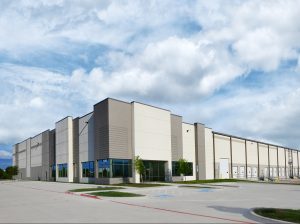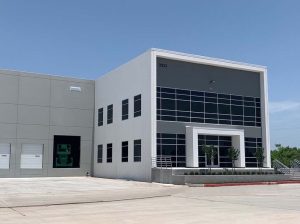Dalfen CIO on DFW Industrial Sector’s ‘Tremendous’ Growth
Sean Dalfen on what’s ahead for the Dallas-Fort Worth market and his company’s plans in the region.
The industrial sector has closed another record-breaking year, as growth from e-commerce skyrocketed demand for modern space close to dense metropolitan areas. Benefiting from high inbound migration, a business-friendly climate and strong infrastructure, the Dallas-Fort Worth industrial market has experienced unprecedented growth in 2021 and, despite a robust pipeline, the metro is expected to remain a top destination for investors.
READ ALSO: Cold Storage Demand on the Rise
Dalfen Industrial President & CIO Sean Dalfen talked with Commercial Property Executive about the Metroplex’s strong year and what’s to come in the short and long term. The company has a strong presence in Texas, with more than 3.7 million square feet of industrial space in the Dallas-Fort Worth area and plans to expand even further. The company recently purchased Century Center, a Class A industrial facility in Irving, Texas.
What were the biggest moments last year for DFW’s industrial market?
Dalfen: Last year was a major year for the market. Investors showed insatiable demand for DFW assets, driving cap rates in the market to their lowest levels in history. Developers added another 25 million square feet to the Dallas-Fort Worth inventory, barely keeping up with unprecedented tenant demand that resulted in over 42 million square feet of absorption. Vacancy in the metro also compressed to its lowest level in the market’s history, causing tenants to compete for spaces and driving up rental rates.
Which submarkets have experienced the most growth in the past twelve months? Which do you think will attract the most investment attention in 2022?
Dalfen: The entire market over the last twelve months has seen a tremendous amount of growth with nearly 50 million square feet under construction as of the end of the year. South Fort Worth has seen strong activity as tenants migrate west on the I-20 corridor for lack of available space in more mature submarkets like GSW. East Dallas has attracted a ton of attention from developers and tenants due to its strong labor pool. With limited land available in the more infill submarkets, North Fort Worth, as well as East and South Dallas, will likely attract a lot of attention going into 2022.
In December, your company grew the Metroplex portfolio with the acquisition of assets close to the Dallas/Fort Worth International Airport and Dallas Love Field Airport. Do you have additional expansion plans for the DFW?
Dalfen: Absolutely, DFW is one of the top performing markets in the nation and its’ pro-business and low tax environment will continue to attract companies and investors for years to come. We plan to continue acquiring and developing buildings to add to our portfolio market-wide, carefully selecting assets in last-mile locations with a key focus on proximity to consumers, labor and major thoroughfares.
What do you think are the biggest issues industrial investors face today in the Metroplex?
Dalfen: There are more investors that have come into the DFW market and are searching for opportunities then there ever have been before. Investors are facing fierce competition with limited opportunities in the market to purchase assets and limited land available to develop new product. Dallas is our backyard, and we are able to find opportunities by leveraging our deep relationship network and first-hand market knowledge.
Dallas-Fort Worth has one of the largest pipelines for industrial projects in the country. Do you think the market will encounter difficulties in absorbing all the new supply?
Dalfen: I don’t think so. In addition to organic growth, DFW’s robust population growth coupled with its centralized location in the U.S and pro-business climate will continue to attract more people and companies to the market. Companies and people continue to move to Texas from higher taxing states and Dallas-Fort Worth is an attractive location with a diversified labor pool, excellent infrastructure, and relative low cost of living.
What are the most in-demand types of industrial spaces at the moment?
Dalfen: Tenants continue to need functional, ready-to-go spaces with office and warehouse lighting already installed by the developer. With the current supply chain issues and prolonged lead times for construction materials that are needed to complete tenant buildouts, tenants are focused on buildings that offer speed-to-market solutions. Additionally, as the density of warehouses and demand for workers increases, tenants are paying close attention to labor demographics and competition for those workers. Despite advances in automation, skilled warehouse workers remain in very high demand.
How do you expect the industrial sector in Dallas-Fort Worth to perform in 2022? What about in the longer term?
Dalfen: The market has benefited from the same fundamental tailwinds driving the entire sector, such as e-commerce growth, onshoring of manufacturing and inventory stockpiling. However, Dallas-Fort Worth will likely continue to be a leader in market performance in 2022 and the longer term due to its strong inbound migration and overall pro-business climate.









You must be logged in to post a comment.